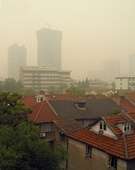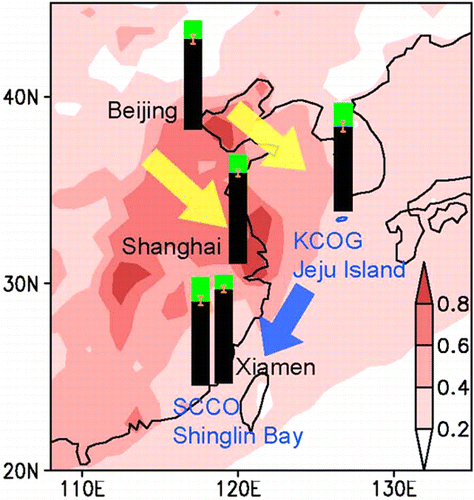Home cooking, traffic are sources of key air pollutants from China

Almost 80 percent of air pollution involving soot that spreads from China over large areas of East Asia—impacting human health and fostering global warming—comes from city traffic and other forms of fossil-fuel combustion, such as home cooking with coal briquettes. That's the conclusion of a study in ACS' journal Environmental Science & Technology, which resolves long-standing questions about sources of air pollution responsible for Asia's infamous atmospheric brown clouds.
Örjan Gustafsson and colleagues from China, South Korea and the United States point out in their study that nobody has been certain about the exact sources of soot, or "black carbon," air pollution from the People's Republic of China. People can inhale these tiny particles deep into the lungs, and estimates implicate soot with 500,000 premature deaths annually in China alone. Black carbon in the atmosphere also absorbs sunlight, and scientists think it is second only to carbon dioxide as a factor in global warming. Gustafsson and his team set out to identify the exact sources of black carbon in China.
They describe using a powerful carbon-14 identification method to trace fully four-fifths of the black carbon emitted in China to incomplete combustion of fossil fuel such as coal briquettes used in home cookstoves and automobile and truck exhaust. "To mitigate near-term climate effects and improve air quality in East Asia, activities such as residential coal combustion and city traffic should be targeted," they conclude.

The article is titled "Source Forensics of Black Carbon Aerosols from China."
More information: Source Forensics of Black Carbon Aerosols from China, Environ. Sci. Technol., 2013, 47 (16), pp 9102–9108. DOI: 10.1021/es401599r
Abstract
The limited understanding of black carbon (BC) aerosol emissions from incomplete combustion causes a poorly constrained anthropogenic climate warming that globally may be second only to CO2 and regionally, such as over East Asia, the dominant driver of climate change. The relative contribution to atmospheric BC from fossil fuel versus biomass combustion is important to constrain as fossil BC is a stronger climate forcer. The source apportionment is the underpinning for targeted mitigation actions. However, technology-based "bottom-up" emission inventories are inconclusive, largely due to uncertain BC emission factors from small-scale/household combustion and open burning. We use "top-down" radiocarbon measurements of atmospheric BC from five sites including three city sites and two regional sites to determine that fossil fuel combustion produces 80 ± 6% of the BC emitted from China. This source-diagnostic radiocarbon signal in the ambient aerosol over East Asia establishes a much larger role for fossil fuel combustion than suggested by all 15 BC emission inventory models, including one with monthly resolution. Our results suggest that current climate modeling should refine both BC emission strength and consider the stronger radiative absorption associated with fossil-fuel-derived BC. To mitigate near-term climate effects and improve air quality in East Asia, activities such as residential coal combustion and city traffic should be targeted.
Journal information: Environmental Science & Technology
Provided by American Chemical Society


















